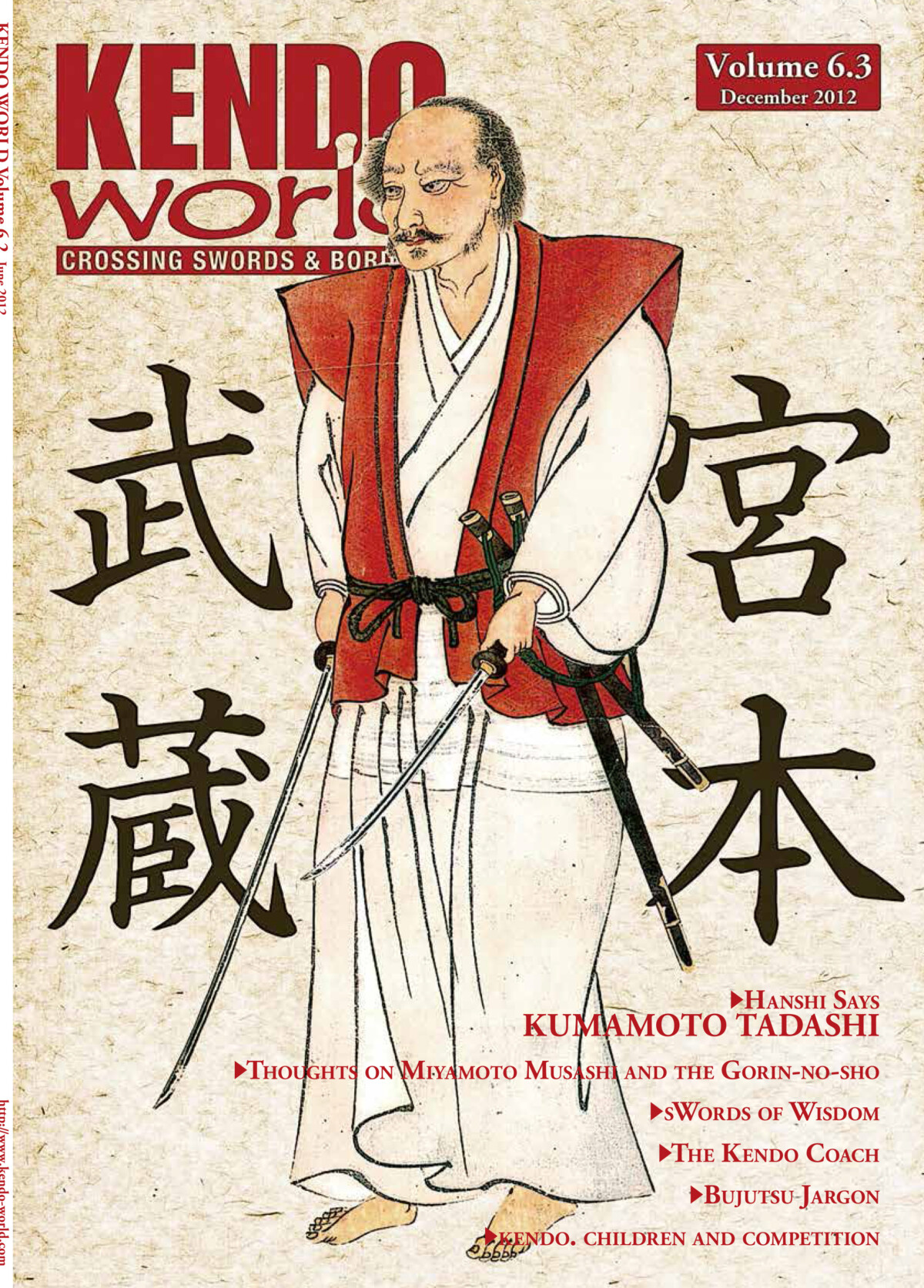
Kendo World 6.3
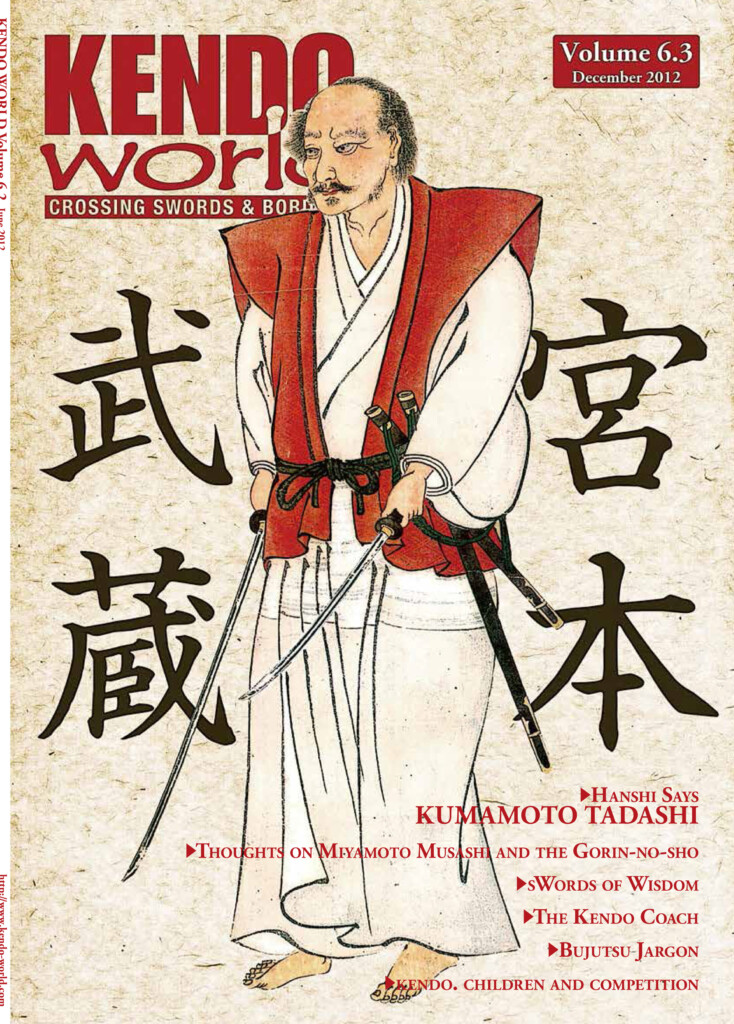
Editorial
By Michael Ishimatsu-Prime
First, the editorial by Michael Ishimatsu-Prime reflects on a busy year for Kendo World, and discusses the furore surrounding Shōdai Kenji, the 2008 AJKC winner and Japan national team member.
Hanshi Says
By Kumamoto Tadashi
Hanshi Says is a popular series in which Japan’s top Hanshi teachers give hints of what they are looking for in grading examinations based on wisdom accumulated through decades of training. This issue features Kumamoto Tadashi from Hiroshima. Kumamoto-sensei passed the 8-dan examination in 1987, and was awarded the title of Hanshi in 1995. He talks about the importance of degeiko and making the most of the opportunities that you have.
Kendo and Asperger’s: One Man’s Story
By Charlie Kondek
This article focuses on Ted Koehler, a member of the kendo club at Eastern Michigan University who has Asperger’s Syndrome. Charlie Kondek discusses the challenges associated in teaching someone with Asperger’s, and how training can be adapted so that they can get the most out of kendo.
Nuts’n Bolts of Kendo: Levels of Improvement and Keiko
By Nakano Yasoji (Hanshi 9-dan)
In this article, Nakano-sensei talks about the importance of kihon. The pillars of shin-jutsu, ki-jutsu and gi-jutsu (mind, spirit and technique) “are interwoven as one entity at the beginner stage through to the highest level.” There is also a discussion of shu-ha-ri.
Thoughts on Miyamoto Musashi and the Gorin-no-sho
By Michael Ishimatsu-Prime
This year is the 400th anniversary of Musashi’s famous duel with Sasaki Kojiro. In this article, Michael Ishimatsu-Prime examines the five chapters Musashi’s of Gorin-no-sho and his other written works, and their relationship to other classics of the martial arts.
sWords of Wisdom: “Use all of your weapons”
By Alex Bennett
This article discusses what possibly influenced Musashi to start using two swords at the same time.
An Interview with Hirata Fuhō Sensei: Musashi’s DNA Lives on
By Alex Bennett
Hirata Fuhō was born in Mimasaka City, Okayama Prefecture, in 1942. Those of you familiar with the history of Miyamoto Musashi will notice an interesting connection: Musashi’s grandfather was Hirata Shōgen; and Musashi is thought to have been born in Mimasaka. Hirata-sensei is actually a direct descendant of the great Musashi, and is the 17th generation head of the Hirata family. As an 8-dan kendo master, he carries on the legacy of great swordsmen in the family.
Bookmark: “The Five Rings”
By Jeff Broderick
KW staff writer Jeff Broderick reviews The Five Rings, David Groff’s translation of Musashi’s Gorin-no-sho.
Reidan Jichi: Kihon Dōsa – Part 3
By Ōya Minoru (Kendo Kyōshi 7-dan)
Kihon-dōsa, or basic movements, refers to kamae, footwork and manipulation of the shinai. In other words, it entails all of the principles behind the striking and thrusting movements for scoring yūkō-datosu (valid attacks) in kendo. This article analyses the various types of suburi.
Who was this Pioneer? Takano Sasaburō
By Alex Bennett
The second article in the series that introduces important kenshi who helped fashion the way in which kendo developed to its modern form, focuses on Takano Sasaburō (1862-1950), also known as one of the “Shōwa Kensei”, or “sword saints” of the twentieth century.
Confucian Voices in Swordsmanship II: Kenjutsu no Fushikihen
By Christopher Hellman
Christopher Hellman continues his exploration of the influences of Confucianism in swordsmanship with a look at Kimura Kyuhō’s Kenjutsu no Fushikihen – Ignorance in Swordsmanship. “Published in 1768, Kenjutsu no Fushikihen was written as a conversation between a sword master and a visitor to the school. It serves as a useful vehicle for discussing the art of swordsmanship: the visitor’s questions and criticisms carry the thread of the argument, as the master explains about his teaching and his art in more detail.”
Unlocking Japan Part 23: Then and Now
By Lockie Jackson
Lockie Jackson’s column continues as he ruminates on how life and Japan has changed since he first arrived on its shores 23 years ago.
Shinai Sagas: Openings
By Charlie Kondek
The latest instalment in popular kendo fiction writer Charlie Kondek’s “Shinai Sagas” is centred on the dai-ni-dōjō or second dojo – a place where beer flows and relationships grow.
Bookmark: The Truth of the Ancient Ways
By Hamish Robison
Anatolly Anshin’s new book on Yamaoka Tesshu, the renowned swordsman, calligrapher and Zen practitioner, is reviewed by Hamish Robison. “Anshin starts with a brief overview of bushi history, with a focus on the intangible bushi cultural heritage leading up to the Meiji period, and the political events that Tesshu would become embroiled in as the Bakufu came to a close and Japan’s post-feudal era began.”
A Bogu bag and a Duffle bag: Clash of the Titans
By Imafuji Masahiro
Imafuji Masahiro writes about his kendo roots as a 7-year-old in Itami City, Hyogo Prefecture, at the Shūbukan dojo led by Hanshi 8-dan Tsurumaru Juichi. He discusses the training regimes of the children at that dojo and a chance encounter.
Kendo that Cultivates People: Part 13
By Sumi Masatake (Hanshi 8-dan)
In the thirteenth part of the “Kendo that Cultivates People” series, Sumi-sensei discusses the establishment and the purpose of the grading system, and the responsibilities of those who serve on the grading panel.
The Kendo Coach: Sports Psychology in Kendo: Part 8 — Aggression in Kendo – part 3
By Blake Bennett
Blake Bennett’s continuing series of articles on aggression in kendo uncover the factors as to why the kendo student is willing to undergo and tolerate ongoing harsh training methods. This instalment looks at “The Concept and Purpose of Kendo” and “The Mindset of Kendo Instruction” and how a contradiction arises between their ideals and the seemingly aggressive and violent methods used to realise them.
Fostering the ‘Gut Instinct’
By Taylor Winter
KW staff writer, Taylor Winter, investigates the differences between analytical and intuitive decision making models, and their link to one’s kendo development.
Friendship through Crossing Swords
By Kate Sylvester
In this article, Kate Sylvester interviews Kozuno Yuka, the only woman with the Okayama Police elite kendo squad. She has represented Japan at the World Kendo Championships and has won the All Japan Women’s Individual Championships twice.
Muslim Women and Kendo: a Look at How Kendo Has Been Embraced by Indonesian Women
By Dr. Stephen Robert Nagy
Dr. Stephen Robert Nagy interviews Happy Purnamasari, a female kendoka from Indonesia. She discusses her attraction to kendo, and how as a Muslim she is able to practise the art that she loves while at the same time observing the strictures of her Islamic faith.
Bujutsu Jargon: Part 3
By Bruce Flanagan MA
Bruce continues his series introducing a number of terms often encountered by people interested in Japanese history and the martial arts.
Bushido as Seen by an Englishman
By Michael Ishimatsu-Prime
Michael Ishimatsu-Prime offers his thoughts on kendo as a lifelong pursuit, and what the attraction of budo is for him and other foreign practitioners.
Kendo, Children and Competition
By Dr. Stephen Robert Nagy
Dr. Stephen Robert Nagy discusses ideas about kendo, kids, competitions and training. Questions addressed include when is the best time to start teaching kendo? When should we introduce bōgu? When is competition appropriate? What and how should we evaluate children in competition?
Bookmark: Kendo—Approaches For All Levels
By Dr. Sergio Boffa
Honda Sotaro’s Kendo—Approaches For All Levels is reviewed by Dr. Sergio Boffa.
Hitler’s Bogu
By Alex Bennett
Alex Bennett writes about the history of possibly the most infamous bōgu in the world ‒ the set presented to Adolf Hitler in 1938 by members of a Japanese student budo delegation who were touring Germany.
It’s Academic – Notes From the Japanese Academy of Budo
Abstracts of the latest research from the Japanese Academy of Budo: A Study into the Process of Establishment of Kendo in Greece; A Study about the Symbol Geom “剱” in Korean Martial Arts Books of the Choson Yi Dynasty.
The Development of Kendo in Slovenia
By Peter Topić
Peter Topić, President of the Kendo Federation of Slovenia, writes on the history and development of kendo in his country, and on the annual summer seminar that attracts many kendoka from across Europe.
A Budo Camp on the Baltic Sea
By Ivayla Ivanova
At “The Art of the Japanese Sword” Summer Budo Camp held from August 11–19, 2012, on the sea shore near Varna, Bulgaria, the participants from Bulgaria, Germany, Russia and France, were able to train in iaido, jodo and kendo. Ivayla Ivanova reports on this seminar organised by the Bulgarian Kendo Federation and Varna Free University Chernorizets Hrabur.
The Dai Nippon Butokukai Naginata-dō Kihon Dōsa
By Baptiste Tavernier
Baptiste Tavernier examines the Dai Nippon Butokukai’s set of generic naginata kata and teaching guidelines entitled Naginata-dō Kihon Dōsa. They were created in 1941 for the purpose of promoting a unified form of naginata in schools.
Bōgu Revolution: The “Antimicrobial Bōgu for Comfortable and Hygienic Keiko!
This discussion between Kyoto based bōgu manufacturer Tozando and students and teachers of Tsukuba University kendo club, is about the properties of Tozando’s newly developed antimicrobial bōgu.
AVAILABLE IN PRINT AND KINDLE VERSIONS AND ON THE BUDO BOOKS APP IN E-BOOK FORMAT! SEE THE LINKS BELOW!!


















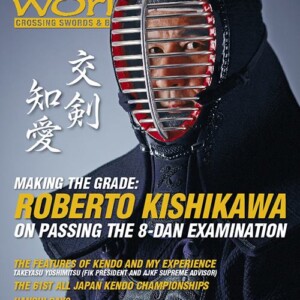

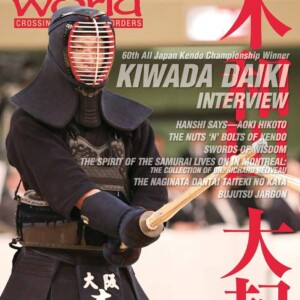
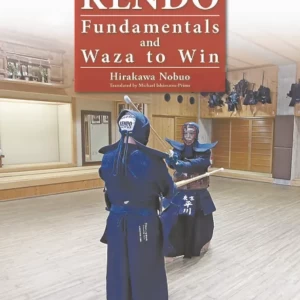
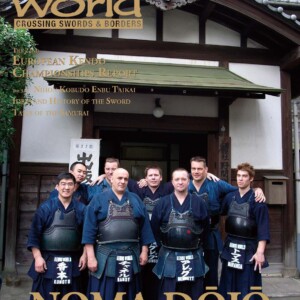

No comments yet.